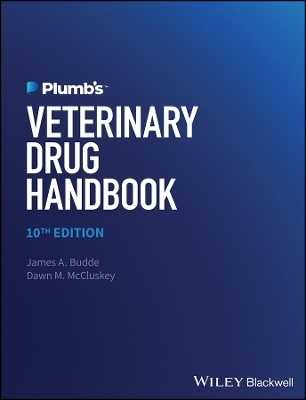
Veterinary Pharmaceuticals in the Environment
Oxford University Press Inc (Verlag)
978-0-8412-6962-0 (ISBN)
- Keine Verlagsinformationen verfügbar
- Artikel merken
This book discusses and presents data relevant to the significance of veterinary pharmaceuticals in the environment. A broad range of topics is covered, including environmental chemistry studies focusing on transport, mobility, sorption, persistence, and bioavailability of the compounds, as well as development of analytical techniques relevant to detection of the pharmaceuticals in environmental matrices, discussion of ecotoxicological studies of veterinary
pharmaceuticals, and information relevant to ecological risk assessments. The primary classes of drugs addressed are veterinary antibiotics and synthetic hormones. The antibiotics include some used in human medicine and others unique to animal medicine. A number of the most widely-used antibiotics are
employed in two different ways: therapeutically to cure or prevent diseases, or as growth promoters. Synthetic hormones are utilized to influence the development of animals, in particular in regards to weight gain and body composition. Many of the environmental concerns over veterinary pharmaceuticals arise from runoff and wastes from confined animal feeding operations (CAFOs), where tens of thousands of meat animals are confined in a small area, even over a million in the case of chickens. In
such situations, the drugs that are excreted intact or partially metabolized can still be biologically active when they enter the environment; even natural hormones from the animals constitute a significant portion of the overall input of bioactive chemicals.
To date, there have been numerous monitoring studies that have confirmed the existence of very low concentrations of animal pharmaceuticals and hormones, especially in surface waters. The next important question is whether those residues are of any significance in the environment, including questions about how long they persist, where they come from, how they move, whether they accumulate in environmental sinks, and what kinds of biological effects they have. The most prominent controversy may
be the one generated around the possibility of antibiotics inducing or sustaining antibiotic-resistant microorganisms in the environment. Another focus is on the hormonal effects on fish and wildlife, especially as the hormones (synthetic or natural) influence reproduction and sexual development in
wild mammals, birds, fish, and amphibians.
This book addresses pressing scientific questions in the field of veterinary pharmaceuticals, including the monitoring of the drugs, the development of analytical chemical and immunochemical methods of quantifying low levels of the residues, mobility, biological availability, uptake, and effects on organisms. Several chapters that address risk assessment perspectives are included.
Keri L. Henderson is a PhD Candidate in the Toxicology program at Iowa State University. Joel R. Coats is Professor of Entomology and Toxicology at Iowa State University
CONTENTS; DR. KERI HENDERSON, DR. JOEL COATS; KERI L.D. HENDERSON, JOEL R. COATS; FATE AND BIOAVAILABILITY; H. HAKK, F.X.M. CASEY, Z. FAN, G. L. LARSEN; D. J. SMITH, C. E. OLIVER, H. HAKK, R. C. ANDERSON, G. L. LARSEN; KENNEDY F. RUBERT IV, CURTIS J. HEDMAN, TAN GUO, JOEL A. PEDERSEN; HEINZ-GEORG WETZSTEIN, JOSEF SCHNEIDER, WOLFGANG KARL; DINGFEI HU, KERI L.D. HENDERSON, JOEL R. COATS; YONG-HAK KIM, CARL E. CERNIGLIA; KERI L.D. HENDERSON, THOMAS B. MOORMAN, JOEL R. COATS; ASSESSING POTENTIAL ENVIRONMENTAL IMPACTS; YUE-WERN HUANG, DEV K. NIYOGI, PAUL K. NAM, JANET M. BANDEFF; MICHAEL H. FARKAS, JAMES O. BERRY, DIANA S. AGA; RICHARD A. BRAIN, KEITH R. SOLOMON, BRYAN W. BROOKS; KEITH R. SOLOMON, DEREK G. HILLIS, LINDA LISSEMORE, PAUL K. SIBLEY; BRYAN W. BROOKS, RICHARD A. BRAIN , DUANE B. HUGGETT, GERALD T. ANKLEY; INDEXES; AUTHOR INDEX; SUBJECT INDEX
| Erscheint lt. Verlag | 5.8.2010 |
|---|---|
| Reihe/Serie | ACS Symposium Series ; 1018 |
| Verlagsort | New York |
| Sprache | englisch |
| Maße | 157 x 233 mm |
| Gewicht | 482 g |
| Themenwelt | Technik ► Umwelttechnik / Biotechnologie |
| Veterinärmedizin ► Klinische Fächer ► Pharmakologie / Toxikologie | |
| ISBN-10 | 0-8412-6962-9 / 0841269629 |
| ISBN-13 | 978-0-8412-6962-0 / 9780841269620 |
| Zustand | Neuware |
| Haben Sie eine Frage zum Produkt? |
aus dem Bereich


